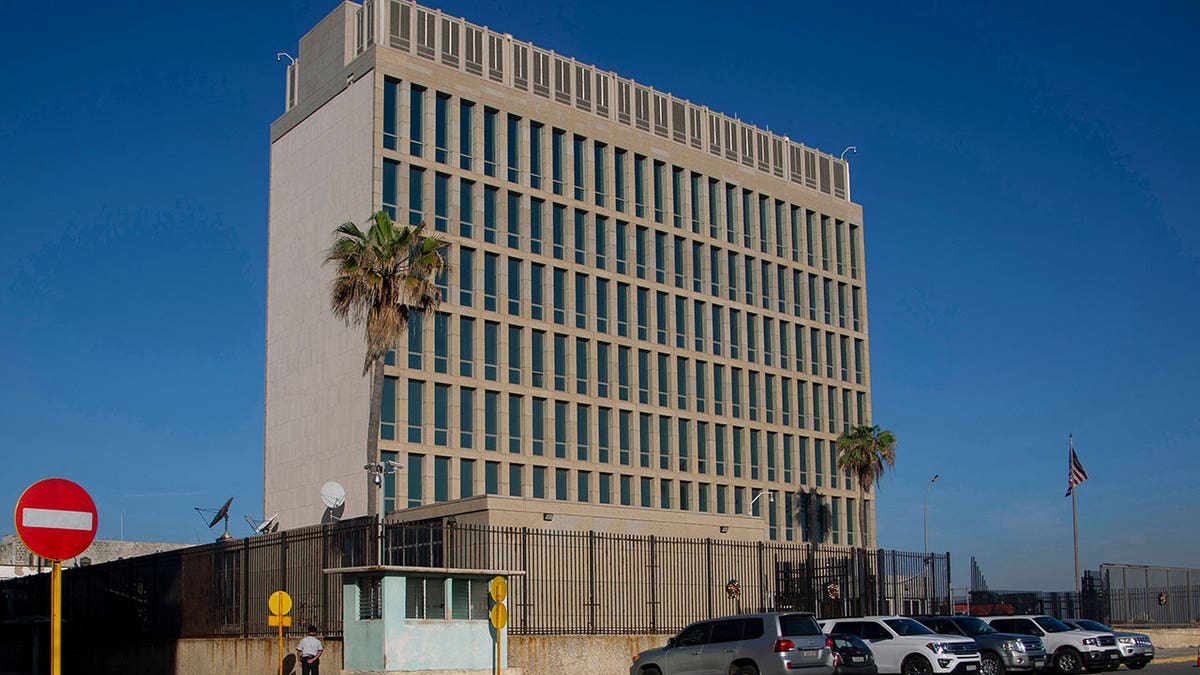- A new study found no evidence of brain injuries among U.S. diplomats and government employees experiencing mysterious health problems known as Havana syndrome.
- The symptoms, which include headaches, balance problems and cognitive difficulties, were first reported in Cuba in 2016.
- Havana syndrome participants also reported higher levels of fatigue, posttraumatic stress symptoms and depression.
An array of advanced tests found no brain injuries or degeneration among U.S. diplomats and other government employees who suffer mysterious health problems once dubbed “Havana syndrome, ” researchers reported Monday.
The National Institutes of Health’s nearly five-year study offers no explanation for symptoms including headaches, balance problems and difficulties with thinking and sleep that were first reported in Cuba in 2016 and later by hundreds of American personnel in multiple countries.
But it did contradict some earlier findings that raised the specter of brain injuries in people experiencing what the State Department now calls “anomalous health incidents.”
HAVANA SYNDROME: FOREIGN ADVERSARIES’ MICROWAVE WEAPONS CAPABILITIES EXPLAINED BY PHYSICIST
“These individuals have real symptoms and are going through a very tough time,” said Dr. Leighton Chan, NIH’s chief of rehabilitation medicine, who helped lead the research. “They can be quite profound, disabling and difficult to treat.”

The U.S. embassy is seen on Jan. 4, 2023, in Havana, Cuba. An array of advanced tests found no brain injuries or degeneration among U.S. diplomats and other government employees who suffer mysterious health problems known as “Havana syndrome,” researchers reported on Monday. (AP Photo/Ismael Francisco, File)
Yet sophisticated MRI scans detected no significant differences in brain volume, structure or white matter — signs of injury or degeneration — when Havana syndrome patients were compared to healthy government workers with similar jobs, including some in the same embassy. Nor were there significant differences in cognitive and other tests, according to findings published in the Journal of the American Medical Association.
While that couldn’t rule out some transient injury when symptoms began, researchers said it’s good news that they couldn’t spot long-term markers on brain scans that are typical after trauma or stroke.
PHYSICISTS, VICTIMS CONTRADICT FEDS’ REPORT ON ‘HAVANA SYNDROME’ ATTACKS ON US DIPLOMATS
That “should be some reassurance for patients,” said study co-author Louis French, a neuropsychologist at Walter Reed National Military Medical Center who treats Havana syndrome. “It allows us to focus on the here and now, to getting people back to where they should be.”
A subset, about 28%, of Havana syndrome cases were diagnosed with a balance problem called persistent postural-perceptual dizziness, or PPPD. Linked to inner-ear problems as well as severe stress, it results when certain brain networks show no injury but don’t communicate properly. French called it a “maladaptive response,” much like how people who’ve slouched to alleviate back pain can have posture trouble even after the pain is gone.
The Havana syndrome participants reported more fatigue, posttraumatic stress symptoms and depression.
The findings are the latest in an effort to unravel a mystery that began when personnel at the U.S. embassy in Cuba began seeking medical care for hearing loss and ear-ringing after reporting sudden weird noises.
Early on, there was concern that Russia or another country may have used some form of directed energy to attack Americans. But last year, U.S. intelligence agencies said there was no sign a foreign adversary was involved and that most cases appeared to have different causes, from undiagnosed illnesses to environmental factors.
Some patients have accused the government of dismissing their ailments. And in an editorial in JAMA on Monday, one scientist called for more research to prepare for the next such health mystery, cautioning that NIH’s study design plus the limits of existing medical technology could have missed some clues.
“One might suspect that nothing or nothing serious happened with these cases. This would be ill-advised,” wrote Dr. David Relman of Stanford University. In 2022, he was part of a government-appointed panel that couldn’t rule out that a pulsed form of energy could explain a subset of cases.
The NIH study, which began in 2018 and included more than 80 Havana syndrome patients, wasn’t designed to examine the likelihood of some weapon or other trigger for Havana syndrome symptoms. Chan said the findings don’t contradict the intelligence agencies’ conclusions.
If some “external phenomenon” was behind the symptoms, “it did not result in persistent or detectable pathophysiologic change,” he said.